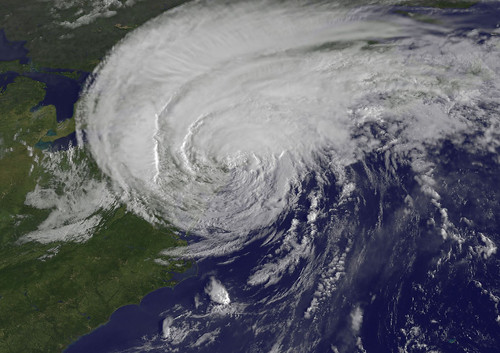Hurricane Irene Reaches New York City by NASA Goddard Photo and…
My heart goes out to all of you who are suffering from the after effects of Hurricane Irene. (This is a list of the names for storms) I was lucky.
The only problem on my property was the downing of lots of small branches and lots of black walnuts. If the electricity had not gone off for 3 days, from the looks of my property only, I would have thought this had been a relatively minor storm. My stream did not flood. The bottom of my property did not flood. No trees nor limbs of trees came down. And I didn’t get water in my basement.
But I know a lot of people suffered. A lot of people still don’t have electricity. Those who didn’t have electricity and had floods in their basements now have to contend with mold and the smells associated with dampness. Even those who had electricity, so much water poured in that their sump pumps could not pump it out fast enough. The thought of such a mess is depressing.
Before the storm came, I prepared as much as I could. I brought in all my houseplants. I stowed away all my gardening pots and tools where there was little likelihood of their blowing around and becoming projectiles. I also thought that it was easier to stow everything away before a storm than to have to find and pick up blown objects after the storm while picking up branches. I anchored everything down that I feared might blow over such as my arbor with the morning glory vines and clematis vines growing over it or the old ladder I use as a trellis for my honey suckle vine Lonicera sempervirens Blanche Sandman.
Lonicera sempervirens by Flatbush Gardener
 In the house, I had lots of pails and every pot and pan filled with water in case I needed to flush. I had gallons of drinking water. I had a battery-operated radio and my cell phone battery charged. I had six flashlights ready with extra batteries. Four of the flashlights look like lanterns. Three of them that I had bought at Ace Hardware gave off enough light that you could read by them- which is what I did. The 4 AA batteries had to be changed daily to keep that bright light charged. But I felt like Abe Lincoln reading by lantern light.
Now that my electricity is restored, I am pouring the water that I stored on my Brugmansia- a shrub that I believe Little Shop of Horrors based the story on- except that the Brugmansia cries “Water Me” all the time. It has at least 60 buds waiting to open that remained intact after the storm. Some shrubs and taller perennials do have to be staked with added soil put around the roots after the storm because small branches fell on them.
But what do you do if your property is flooded and you were growing vegetables? Flowers are not as much a concern. But one has to be careful that the vegetables and fruit are not contaminated by the flooding waters. If you have any question about the status of any produce that was submerged under water, it is best to err on the side of safety and NOT eat any vegetable or fruit that worries you.
Read the recommendation from this journal.
The article recommends that a new soil test should be taken in any of the flooded areas because “the nutrient content and the flood waters may have changed pH of the soil. Soils that have been covered with flood waters should be tilled at least six inches deep after they have dried out before planting a new crop.” Please read the entire article for more information.
If you’re interested in reading about food safety read this.
If you are also concerned about whether the soil in your yard has been contaminated, you can have a soil test done that will check for contaminants. The soil tests are done by your local agriculture extension or Master Gardener office or a soil lab in your area. When you get the soil tested, let them know what your concerns about the soil are. See here.
Let TheGardenLady know how your gardens survived. Do you have any recommendations to prepare the garden should we have another horrific storm?


